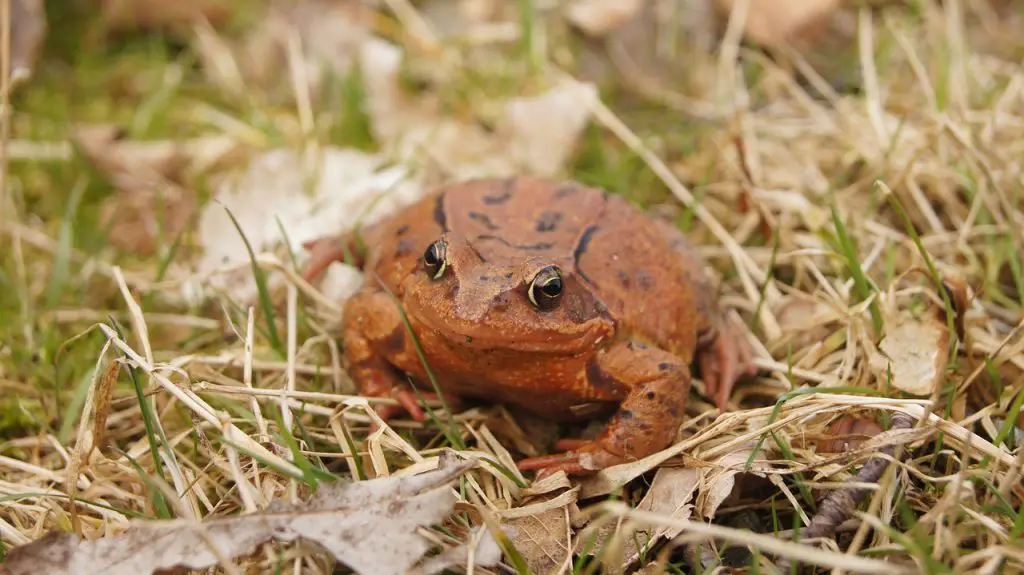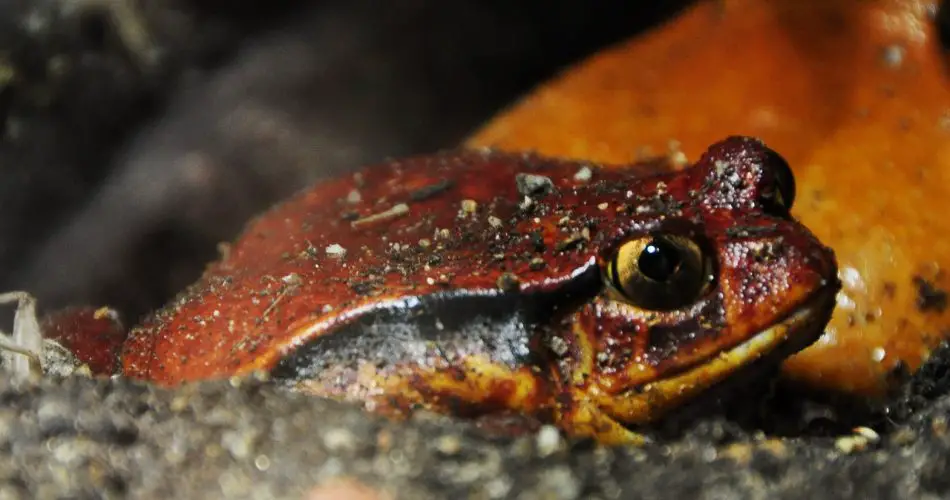Introduction to Tomato Frogs
Tomato frogs, also known as Dyscophus antongilii, are unique amphibians native to the island of Madagascar. These small, colorful frogs are named after their vibrant red-orange coloration, which resembles a ripe tomato. In this blog post, we will explore the native habitat of tomato frogs and delve into various aspects of their natural range, including their distribution, habitat characteristics, and the environmental factors that affect their distribution. Additionally, we will discuss the conservation status of tomato frogs and highlight the importance of protecting their natural habitat. Join us on this exciting journey as we uncover the fascinating world of tomato frogs in their native environment.
Distribution of Tomato Frogs
Tomato frogs, scientifically known as Dyscophus antongilii, are predominantly found in the eastern part of Madagascar. They inhabit a limited range within this region, specifically in the lowland rainforests of northeastern Madagascar.
These unique amphibians are distributed across several protected areas and national parks including Marojejy National Park, Masoala National Park, and the Zahamena National Park. Their distribution is relatively localized, making them endemic to this specific area.
Within their restricted distribution range, tomato frogs can be found in various microhabitats such as forest floor leaf litter, vegetation, and near stagnant water sources like swamps and ponds. They are specially adapted to thrive in these humid and tropical environments.
It is important to note that while tomato frogs have a limited distribution range, their presence in certain areas may vary due to variations in temperature, humidity, and other local environmental factors. This can influence their distribution within their native range.
Understanding the distribution of tomato frogs provides valuable insights into their natural habitat and helps in implementing conservation strategies to ensure their long-term survival. By preserving their native range and mitigating threats, we can protect the unique biodiversity that these fascinating creatures contribute to the ecosystem.

Native Range of Tomato Frogs
The native range of tomato frogs encompasses the eastern coast of Madagascar, an island located off the coast of Southeast Africa. These vibrant amphibians are endemic to the region, meaning they are found nowhere else in the world.
Madagascar’s diverse ecosystems provide the ideal environment for tomato frogs to thrive. They can be found in a variety of habitats, including rainforests, swamps, marshes, and even agricultural areas. This wide distribution enables them to adapt to different ecological conditions within their native range.
Within their range, tomato frogs are known to inhabit both coastal and inland regions. They are particularly abundant in the lowland rainforests of eastern Madagascar, where their unique adaptations allow them to flourish.
Due to their restricted distribution, protecting the native range of tomato frogs is crucial for their survival. Habitat loss, deforestation, and climate change pose significant threats to these amphibians and their ecosystems. Efforts are being made to preserve and conserve the natural habitats that tomato frogs rely on, ensuring their continued existence in their native range for generations to come.
Habitat Characteristics
Tomato frogs, scientifically known as Dyscophus spp., inhabit the unique forests and wetlands of Madagascar, an island off the southeast coast of Africa. These beautifully colored amphibians primarily reside in the eastern and northeastern regions of Madagascar, where they can be found in lowland rainforests, swamps, and marshes.
One of the distinguishing features of the habitat preferred by tomato frogs is its high humidity. These frogs thrive in environments with moisture levels ranging from 75% to 90%. The lush vegetation and dense foliage in their habitat provide them with the necessary shade and shelter, keeping the humidity levels ideal for their survival.
The substrate within the habitat of tomato frogs is typically composed of leaf litter, damp soil, and decaying organic matter, which creates a soft and moist environment. This substrate is crucial for female tomato frogs to lay their eggs, as they prefer moist areas for successful reproduction.
Moreover, tomato frogs are semi-aquatic creatures, often found in proximity to bodies of water such as ponds, swamps, and slow-flowing streams. These water sources not only serve as breeding grounds for the frogs but also provide an abundant food supply in the form of aquatic insects, small crustaceans, and other invertebrates.
The unique habitat characteristics of tomato frogs play a significant role in their survival and well-being. The combination of high humidity levels, suitable substrates, and access to nearby water sources ensures that these amphibians can thrive in their natural environment.
Understanding and preserving the specific habitat characteristics crucial to tomato frogs’ survival is vital for their long-term conservation. By raising awareness about their habitat needs, we can contribute to the preservation of these colorful and charismatic amphibians in their native range.
Environmental Factors Affecting Tomato Frog Distribution
Tomato frogs, scientifically known as Dyscophus antongilii, are fascinating creatures that inhabit the lush rainforests of Madagascar. Their distribution is heavily influenced by several environmental factors that shape their overall population and range. Understanding these factors is crucial to ensure the long-term survival of these unique amphibians. In this section, we will explore the environmental factors that affect tomato frog distribution.
1. Climate: Tomato frogs thrive in the warm and humid tropical climate of Madagascar. They are sensitive to fluctuations in temperature and rainfall patterns, which directly impact their breeding and foraging activities. Changes in climate, such as prolonged droughts or extreme weather events, can disrupt their lifecycle and limit their distribution.
2. Habitat Loss: Deforestation poses a significant threat to tomato frogs’ natural habitat. As human activities encroach upon their native range, the frogs face habitat loss and fragmentation. The destruction of their breeding grounds and a decrease in suitable vegetation cover limit their dispersal and reproduction, ultimately affecting their distribution.
3. Pollution and Water Quality: Tomato frogs are semi-aquatic creatures that rely on clean freshwater habitats for breeding and sustenance. Pollution from agricultural runoff, logging activities, and human settlements can introduce harmful chemicals and sedimentation into their habitats. Poor water quality negatively affects their health, breeding success, and distribution.
4. Invasive Species: The introduction of non-native species, such as predatory fish and other invasive amphibians, can significantly impact tomato frog populations. These invaders might outcompete the frogs for resources or prey upon them directly. The presence of invasive species disrupts the delicate ecological balance and can restrict tomato frog distribution.
5. Disease and Parasites: Tomato frogs are susceptible to various diseases and parasites, which can influence their distribution. Chytridiomycosis, a deadly fungal infection, has decimated amphibian populations globally. This disease, along with other pathogens and parasitic infections, can weaken tomato frogs and limit their distribution to disease-free areas.
Efforts to conserve tomato frogs and protect their environment are crucial to maintain their distribution and ensure their survival. Conservation strategies include habitat restoration, protected areas establishment, and educational campaigns to raise awareness about the importance of preserving these unique creatures and their natural habitat.
By understanding the environmental factors that affect tomato frog distribution, we can work towards implementing effective conservation measures and safeguarding these remarkable amphibians for future generations to enjoy.

Conservation Status of Tomato Frogs
The conservation status of tomato frogs is an important aspect to consider when discussing their native habitat. These unique amphibians are currently listed as a species of least concern on the IUCN Red List. This designation means that the overall population of tomato frogs is stable and not currently threatened.
However, it is essential to monitor and protect the habitat of tomato frogs to ensure their continued survival. The primary threats to these frogs include habitat loss, degradation, and pollution. Urbanization and agricultural expansion are encroaching upon their natural habitats, leading to habitat fragmentation and loss.
Efforts are being made by conservation organizations and researchers to educate local communities about the importance of preserving the natural habitats of tomato frogs. These initiatives aim to raise awareness about the need for sustainable land-use practices and the protection of wetland ecosystems, which are crucial for the survival of tomato frogs.
Conservation strategies for tomato frogs involve creating protected areas where their habitats can be safeguarded. These areas also allow for the implementation of monitoring programs to assess population trends and potential threats. In addition, initiatives such as habitat restoration and captive breeding programs are being undertaken to mitigate the effects of habitat loss and ensure genetic diversity.
Collaboration between local communities, researchers, and conservation organizations is vital for the long-term survival of tomato frogs. By working together, we can protect their natural habitats and make a positive impact on their conservation status. It is crucial to recognize the value of tomato frogs in maintaining the delicate balance of ecosystems and to actively support their conservation efforts.
In conclusion, while tomato frogs are currently listed as a species of least concern, their conservation status remains an important topic. By understanding the threats they face and implementing effective conservation measures, we can ensure their continued presence in their native habitats for future generations to appreciate and enjoy.

Conclusion: Tomato Frogs in their Natural Habitat
In conclusion, exploring the native habitat of tomato frogs has provided valuable insights into the distribution, habitat characteristics, and environmental factors that affect their survival. By understanding these aspects, we can implement effective conservation strategies to protect their natural range.
Tomato frogs, scientifically known as Dyscophus antongilii, are endemic to the lowland rainforests of eastern Madagascar. They inhabit a limited range within this region, primarily in protected areas such as Marojejy National Park, Masoala National Park, and the Zahamena National Park.
The unique habitat characteristics of tomato frogs include high humidity levels, suitable substrates like leaf litter and damp soil, and proximity to bodies of water such as ponds and swamps. These amphibians are specially adapted to thrive in the warm and humid tropical climate of Madagascar.
However, tomato frogs face threats such as habitat loss, pollution, climate change, invasive species, and diseases. These factors can impact their distribution and population. Efforts are being made to preserve their natural habitats, establish protected areas, and raise awareness about their conservation needs.
While tomato frogs are currently listed as a species of least concern on the IUCN Red List, it is crucial to monitor their conservation status and continue protecting their habitats. By collaborating with local communities, researchers, and conservation organizations, we can ensure the long-term survival of tomato frogs and maintain the biodiversity they contribute to the ecosystem.
In conclusion, preserving the native habitat of tomato frogs is essential to safeguard their unique characteristics and ensure their continued existence for future generations to appreciate and learn from. Let us join hands in protecting these fascinating amphibians and their natural environment.


